Identification and expression analysis of pineapple sugar transporters reveal their role in the development and environmental response
- PMID: 36352877
- PMCID: PMC9638087
- DOI: 10.3389/fpls.2022.964897
Identification and expression analysis of pineapple sugar transporters reveal their role in the development and environmental response
Abstract
In plants, sugars are required for several essential functions, including growth, storage, signaling, defense and reproduction. Sugar transporters carry out the controlled movement of sugars from source (leaves) to sink (fruits and roots) tissues and determine the overall development of the plant. Various types of sugar transporter families have been described in plants, including sucrose transporters (SUC/SUT), monosaccharide transporter (MST) and SWEET (from "Sugar Will Eventually be Exported Transporters"). However, the information about pineapple sugar transporters is minimal. This study systematically identified and classified 45 MST and 4 SUC/SUT genes in the pineapple genome. We found that the expression patterns of sugar transporter genes have a spatiotemporal expression in reproductive and vegetative tissues indicating their pivotal role in reproductive growth and development. Besides, different families of sugar transporters have a diel expression pattern in photosynthetic and non-photosynthetic tissues displaying circadian rhythm associated participation of sugar transporters in the CAM pathway. Moreover, regulation of the stress-related sugar transporters during cold stress indicates their contribution to cold tolerance in pineapple. Heterologous expression (yeast complementation assays) of sugar transporters in a mutant yeast strain suggested that SUT1/2 have the ability to transport sucrose, and STP13, STP26, pGlcT-L2 and TMT4 are able to transport glucose, whereas SWEET11/13 transport both sucrose and fructose. The information provided here would help researchers further explore the underlying molecular mechanism involved in the sugar metabolism of pineapple.
Keywords: circadian; fruit development; gene expression; pineapple; sugar transporter.
Copyright © 2022 Fakher, Jakada, Greaves, Wang, Niu, Cheng, Zheng, Aslam, Qin and Wang.
Conflict of interest statement
The authors declare that the research was conducted in the absence of any commercial or financial relationships that could be construed as a potential conflict of interest.
Figures
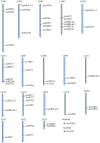


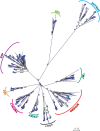

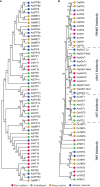
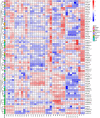
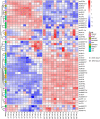



Similar articles
-
Sugar transporters in Fabaceae, featuring SUT MST and SWEET families of the model plant Medicago truncatula and the agricultural crop Pisum sativum.PLoS One. 2019 Sep 30;14(9):e0223173. doi: 10.1371/journal.pone.0223173. eCollection 2019. PLoS One. 2019. PMID: 31568488 Free PMC article.
-
Evolutionary expansion and functional divergence of sugar transporters in Saccharum (S. spontaneum and S. officinarum).Plant J. 2021 Feb;105(4):884-906. doi: 10.1111/tpj.15076. Epub 2020 Dec 8. Plant J. 2021. PMID: 33179305
-
Rice Transcription Factor OsDOF11 Modulates Sugar Transport by Promoting Expression of Sucrose Transporter and SWEET Genes.Mol Plant. 2018 Jun 4;11(6):833-845. doi: 10.1016/j.molp.2018.04.002. Epub 2018 Apr 12. Mol Plant. 2018. PMID: 29656028
-
Sugars en route to the roots. Transport, metabolism and storage within plant roots and towards microorganisms of the rhizosphere.Physiol Plant. 2019 Jan;165(1):44-57. doi: 10.1111/ppl.12751. Epub 2018 Sep 3. Physiol Plant. 2019. PMID: 29704246 Review.
-
Plant sugars: Homeostasis and transport under abiotic stress in plants.Physiol Plant. 2021 Apr;171(4):739-755. doi: 10.1111/ppl.13283. Epub 2020 Dec 1. Physiol Plant. 2021. PMID: 33215734 Review.
Cited by
-
Sugar import mediated by sugar transporters and cell wall invertases for seed development in Camellia oleifera.Hortic Res. 2024 May 10;11(7):uhae133. doi: 10.1093/hr/uhae133. eCollection 2024 Jul. Hortic Res. 2024. PMID: 38974190 Free PMC article.
-
Identification and Expression Pattern Analysis of AsSWEET Gene Family in Achnatherum splendens.Int J Mol Sci. 2025 Jul 4;26(13):6438. doi: 10.3390/ijms26136438. Int J Mol Sci. 2025. PMID: 40650214 Free PMC article.
-
Genome-wide identification and expression profiling of MST, SUT and SWEET transporters in Dendrobium catenatum.BMC Genomics. 2024 Dec 18;25(1):1213. doi: 10.1186/s12864-024-11121-4. BMC Genomics. 2024. PMID: 39695392 Free PMC article.
-
Genome-Wide Identification and Expression Analysis of the SUT Family from Three Species of Sapindaceae Revealed Their Role in the Accumulation of Sugars in Fruits.Plants (Basel). 2023 Dec 28;13(1):95. doi: 10.3390/plants13010095. Plants (Basel). 2023. PMID: 38202403 Free PMC article.
-
Multi-omic applications for understanding and enhancing tropical fruit flavour.Plant Mol Biol. 2024 Jul 8;114(4):83. doi: 10.1007/s11103-024-01480-7. Plant Mol Biol. 2024. PMID: 38972957 Free PMC article. Review.
References
-
- Aslam M., Fakher B., Greaves J. G., Jakada B. H., Qin R., Qin Y. (2022). “A CBL-interacting protein kinase, AcCIPK18, from ananas comosus regulates tolerance to salt, drought, heat stress and sclerotinia sclerotiorum infection in arabidopsis,” in Environmental and experimental botany 194, 104728. doi: 10.1016/j.envexpbot.2021.104728 - DOI
-
- Aslam M., Fakher B., Jakada B. H., Zhao L., Cao S., Cheng Y., et al. . (2019). Genome-wide identification and expression profiling of CBL-CIPK gene family in pineapple (Ananas comosus) and the role of AcCBL1 in abiotic and biotic stress response. Biomolecules 9, (7). doi: 10.3390/biom9070293 - DOI - PMC - PubMed
LinkOut - more resources
Full Text Sources

